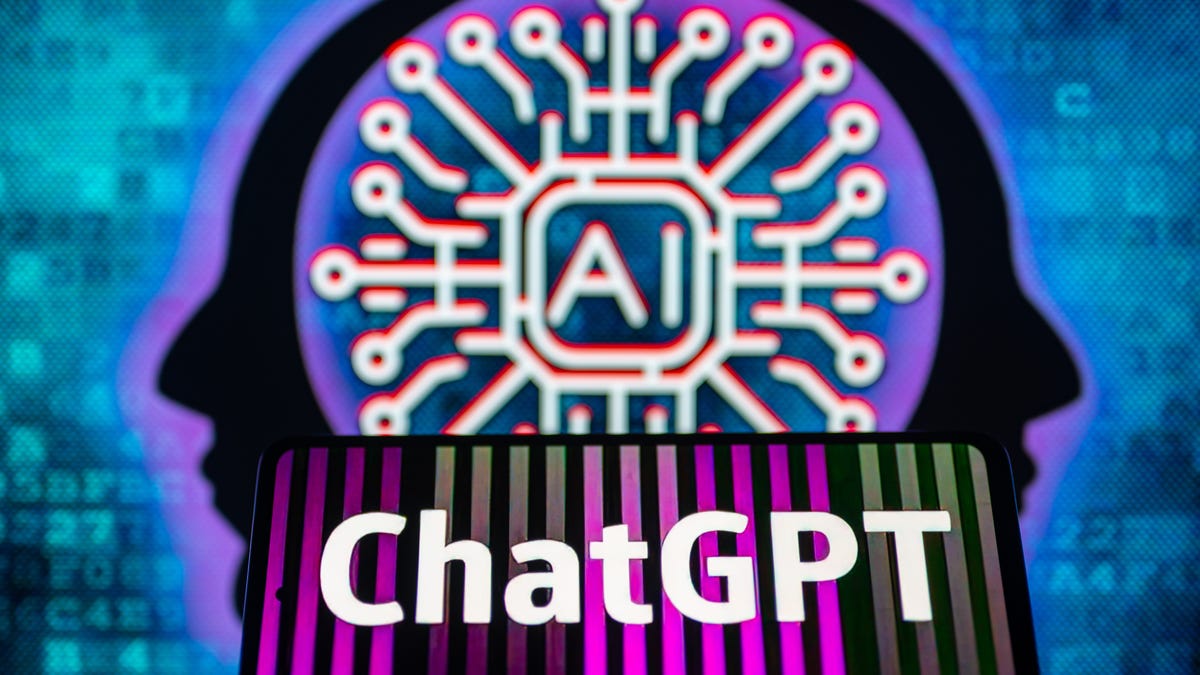It’s no surprise that scammers and spammers have embraced AI. It’s a technology almost tailor-made to force-multiply reprehensible activity. What is surprising is that they have used it to scam crafters and makers — and it’s probably only going to get worse.
Searches on Etsy for pattern, plan, and recipe each return 1,000+ results. All of these are digital documents that AIs can produce. But it’s not just fake AI documents that might be for sale on Etsy. We all know that spammers flood the internet with garbage sites that return in searches, used as link farms, and to provide SEO juice to other scammy sites. In this article, I’ll show you how unknowingly downloading AI-generated garbage can cause you frustration and cost you money.
Also: 7 essential password rules to follow in 2024, according to security experts
As one example, we’ll look at the yarn crafts of knitting and crochet. But this problem could just as easily haunt folks using recipes when cooking or baking. There are a ton of other hobbies, crafts, and activities that rely on sequences of written instructions, all of which could possibly be corrupted by the scams I’ll show you.
Did you know hand-made knitting and crochet crafts have something in common with smartphone apps and 3D printers? That’s right: the short answer is they use programming code. Let’s deconstruct the relationships between crafting and coding — and then I’ll provide some important lessons for everyone on how to spot some AI-generated scams.
Knitting and crochet patterns are pretty much code
My wife loves to knit and crochet — two different crafts that use yarn to create clothing, accessories, toys, and home decor items. Both essentially knot or merge yarn to create material that can then be used to make sweaters, scarves, hats, and more.
Most crafters use patterns. Here’s a snippet of a pattern created by crochet designer and influencer Elise Rose, who we’ll return to later because her YouTube video explains the AI-scamming issue in detail:
sl st to the ch 2 space from previous round, ch 3, dc, tr, 2 dc, hdc, all in the ch 2 space, ch 1. SPsc into the ch 1 space directly below from Round 1, ch 1, SPsc into the next ch 1 space directly below from Round 1, ch 1 [hdc, 2 dc, tr, 2dc, hdc, ch 1, into the ch 2 space from Round 2, SPsc into the ch 1 space directly below from Round 1, ch 1, SPsc into the ch 1 space directly below from Round 1, ch 1] 4 times (total of 5 points), in the same ch 2 space we began our work for this round, hdc, sl st to the top of ch 3 to close round, fasten off and weave in end
Look at that. That’s code. It provides instructions to perform certain stitches for a certain number of steps, then to switch to a different set of stitches for another set of steps. Knitting, while a different craft, also has steps that are, basically, lines of code.
Also: How ChatGPT scanned 170k lines of code in seconds, saving me hours of work
Similarly, 3D printing uses something called G-code. A designer creates a virtual object in a computer-aided design (CAD) tool like Fusion 360, and then a slicer converts the design into G-code that tells the 3D printer where to put the print head, what temperature to heat it to, and where to move it next. The result is a physical object.
Functionally, people who knit and crochet are like machines that interpret knitting and crochet patterns — their version of G-code — and turn those codes into physical objects. I mean, the analogy is tight. 3D printers take spools of plastic filament and create physical objects. Knit and crochet craftspeople take skeins of yarn and create physical objects.
Yarn crafts are lucrative industries
According to a 2016 study by the Association for Creative Industries and MaritzCX, a customer experience and market research company now part of InMoment (another company that deals with customer relations), 63% of US households engaged in a craft or hobby in 2016 (the most recent survey I could find on this market), and spent almost $44 billion.
Also: AI phone scams sound scary real. Do these 5 things to protect yourself and your family
A quarter of US households participated in knitting and crocheting during that time, or roughly 28.8 million households. The average knitter or crochet crafter, according to the study, spent an average of $20.57 per month, making knitting and crochet in the US a $2.79 billion market annually back in 2016.
If millions of people each spend about $250 a year on a craft, that’s a big money-making opportunity.
Much of that spending (at least for knitting and crochet) goes into buying yarn and knitting supplies and gadgets. But there’s another big area where crafters spend cash: patterns, or the aforementioned instructions (the code) for making knitted or crocheted objects.
AI, crochet patterns, and beyond
Elise Rose, the woman I mentioned above, is one of the designers who posts her patterns on the web. In Rose’s case, the patterns are offered for free as part of her role as an online influencer.
Also: How to use ChatGPT to write code
One of the biggest sources of online patterns is a yarn-crafter specific social network called Ravelry. The site hosts patterns and pictures of items made with those patterns and functions as a marketplace selling some of those patterns to crafters.
And then, of course, there’s Etsy where a single click gets you a whole slew of knitting and crochet-related items, including a ton of pattern listings. My wife tells me that pretty much every yarn company gives away free patterns as well.
Since crochet and knit patterns are essentially code, AIs can generate them. But as we’ve seen, the code won’t necessarily work just because an AI system generated it. Similarly to conversational responses from ChatGPT, AI-generated code needs to be vetted to ensure it’s functional, not just gibberish.
Also: How I test an AI chatbot’s coding ability – and you can too
Rose, the crochet designer, points out the consequences of this in a YouTube video. While she makes these points about knitting and crocheting specifically, many of these problems apply to generative AI in general and exemplify the kinds of challenges this technology will bring into the mainstream.
The problem with AI-generated instructions
But really, what’s the harm? So, AIs generate patterns that are flawed. Worst case, someone spent a few bucks for a worthless craft pattern. It’s annoying, but no big loss, right? Well, no.
Most crafts and hobbies involve two investments: time and materials. Let’s say you downloaded a new dinner recipe from the internet that seems promising. You didn’t know it was created by an AI.
Also: Photoshop vs. Midjourney vs. DALL-E 3: Only one AI image generator passed my 5 tests
So now, you go ahead and follow the recipe to make that meal in the kitchen. You spend a fair amount of cash on the ingredients, spend an hour or more working hard to prepare everything, wait however long the food takes to cook, and then… it tastes horrible. Even though the recipe was free, you’ve lost money on the ingredients, wasted hard work, and still don’t have dinner.
That’s the new behavior we’re starting to notice with AIs. It’s starting to reach previously fairly low-tech activities we all felt were just part of normal life. These AI-generated patterns can cause several problems for crafters. As Rose mentions, people buying them may be disappointed because AI struggles to get the patterns right.
Also: This AI-generated crypto invoice scam almost got me, and I’m a security pro
An even bigger issue, however, is wasted time and effort, as the cooking example above showed. My wife can spend anywhere from a single evening (to create a hat) to half a year (for an afghan) on a project. I’ve seen how disappointed and frustrated she is if she misses a stitch and has to reverse her work to fix it — in some cases, a flawed AI pattern could mean ripping out hours and hours of work.
At least with a traditional computer program generated by the AI, there’s a fair chance that you’ll see it fail in minutes. But with a flawed knitting or crochet pattern, the crafter could have spent weeks pouring their creative soul into a project that is destined to fail, through no fault of their own. It’s like that recipe. You might have followed all the directions perfectly, but because the AI didn’t get it right initially, you wound up with an expensive dinner in the trash.
Also: How to use Photoshop’s Generative Fill AI tool to easily transform your boring photos
Rose also points out that beginners might not realize the pattern is flawed. They might get discouraged when their hard work doesn’t pan out, thinking they’re not good at crocheting or knitting, and give up on the craft — when the real culprit is an inaccurate AI-generated pattern.
There are several ways to train yourself to be on the lookout for AI-generated patterns.
Tips for spotting AI-generated patterns
Rose points out eight tips for spotting AI-generated patterns:
- Fantastic detail: If a crafted item looks incredibly detailed, it’s probably AI-generated.
- Impossible stitches: If you look at a picture of an item and the stitches are unlike anything you’ve seen before, they’re probably fake.
- Too big or small: If the object is gigantic or extremely tiny, it’s unlikely to be a knitted or crocheted item. Yes, there are a few art installations like this Guiness World Record Holder where the creator made something huge, but that creator is likely to be identified and profiled in some depth.
- Something’s not right: Look at the image. Is there something off about it, like an animal with five legs? AIs often make mistakes when they produce images.
- Look at the hands: AIs often struggle to generate hands, adding fingers and depicting them in impossible locations.
- Overly vivid colors: Look at the colors of the yarn. Are they too bright or vivid and more saturated than any color yarn you’ve seen? If color changes in the yarn happen seamlessly, that’s a clue it’s the work of an AI.
- Progress photos: Rose recommends looking for progress photos — the image is likely generated by an AI if there aren’t any.
- Video: Is there any video of the crocheted object? If there is, especially if it shows not just the front, but the sides and back of the item, it’s likely real.
Other questions to ask yourself
Rose says that every pattern designer wants credit for their pattern, so there will be a name somewhere on it. If you don’t see what is essentially a byline for the pattern, it’s likely to have been created by AI.
If there is a designer name, look for an online presence. Rose says most pattern designers have at least some online presence beyond an Etsy store. Look for Pinterest, Instagram, Facebook, YouTube, a website, or something that shows additional promotional effort.
Also: How I used ChatGPT and AI art tools to launch my Etsy business fast
If you want to see examples of AI-generated creations that are really fake, I encourage you to watch Rose’s video. She spotlights a number of fake items and deconstructs what makes them identifiable as fake.
The hidden cost of AI
I fear this foray into the world of yarn crafting and AI scams is just the beginning of the hidden cost as AI begins to infiltrate our more mainstream activities. AI provides a new tool for deploying scams and spam — and almost every market where people spend money is a target.
Also: ChatGPT vs. Microsoft Copilot vs. Gemini: Which is the best AI chatbot?
Rose’s suggestions for watching for AI crochet patterns have value beyond crochet and knitting. Look for the uncanny valley. Keep an eye out for things that look too perfect. Look for items that are too complex or detailed to be physically possible. Look for signs the product has been used in the real world.
How does this make you feel? Are you a crafter or hobbyist? Have you seen AI infiltrate your hobby or favorite activities yet? Let us know in the comments below.
You can follow my day-to-day project updates on social media. Be sure to subscribe to my weekly update newsletter, and follow me on Twitter/X at @DavidGewirtz, on Facebook at Facebook.com/DavidGewirtz, on Instagram at Instagram.com/DavidGewirtz, and on YouTube at YouTube.com/DavidGewirtzTV.



/cdn.vox-cdn.com/uploads/chorus_asset/file/25699024/boeing_starliner_capsule.jpeg)


/cdn.vox-cdn.com/uploads/chorus_asset/file/23144919/john_deere_4.jpg)




